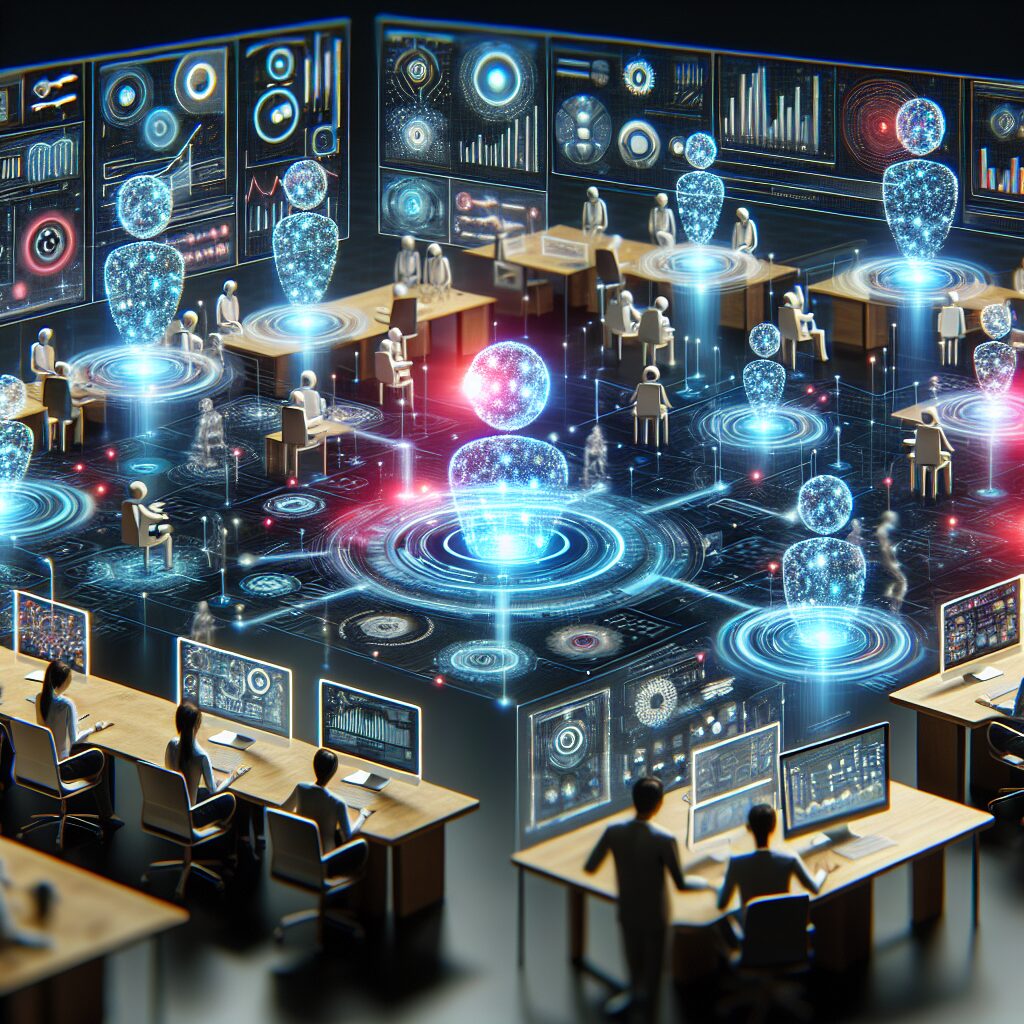
AI Agents: Your Next Digital Team Members for Enhanced Efficiency
The pursuit of efficiency is a constant drumbeat in the business world. Automation has long been a key strategy, but traditional automation often relies on rigid rules and predefined workflows. Now, a new paradigm is emerging: AI agents. These intelligent, autonomous software entities promise to revolutionize how businesses operate by handling complex tasks, making informed decisions, and seamlessly collaborating with both human employees and other systems. For business leaders and operations managers seeking to elevate productivity and unlock new capabilities, understanding and preparing for AI agents is becoming increasingly critical.
What are AI Agents and Agentic Systems?
At their core, AI agents are autonomous entities designed to perceive their environment, process information, and take actions to achieve specific goals. Unlike traditional software programs that execute predetermined commands, AI agents possess a degree of intelligence, allowing them to adapt to changing circumstances and make decisions without explicit human intervention. This intelligence is typically driven by machine learning, natural language processing (NLP), and reasoning capabilities.
Agentic systems are essentially teams of these AI agents working together, often in a distributed manner, to tackle complex problems. Each agent within the system may specialize in a specific area, communicate with other agents, and contribute to a shared objective. This collaborative approach allows agentic systems to handle tasks far beyond the scope of individual AI agents or traditional automation solutions.
A key characteristic that distinguishes AI agents from conventional automation tools is their capacity for reasoning and planning. They can analyze complex situations, formulate strategies, and adjust their actions based on real-time feedback. This empowers them to handle unpredictable scenarios and adapt to dynamic environments, a crucial advantage over rigid, rule-based systems.
Consider this simplified analogy: Imagine a shipping company. Traditional automation might involve software that prints labels and tracks packages based on pre-defined routes. An AI agent, on the other hand, could analyze traffic patterns, weather conditions, and delivery schedules to dynamically reroute packages, proactively avoid delays, and optimize the entire logistics process.
Key Features of AI Agents:
- Autonomy: Agents operate independently without continuous human supervision.
- Intelligence: They leverage AI technologies to learn, reason, and make decisions.
- Adaptability: Agents can adjust their behavior in response to changing conditions.
- Goal-oriented: They are designed to achieve specific objectives.
- Interactivity: Agents can communicate and collaborate with other agents and humans.
Real-World Applications: Current Use Cases Demonstrating Impact
While the field is rapidly evolving, AI agents are already demonstrating tangible value in various industries. Here are some illustrative examples:
- Customer Service: AI-powered virtual assistants are evolving beyond simple chatbots. They can now handle complex customer inquiries, proactively identify and resolve issues, and escalate problems to human agents when necessary. For example, companies like Amelia offer cognitive AI agents that can understand customer intent and personalize interactions, resulting in improved customer satisfaction and reduced support costs.
- Supply Chain Management: Agentic systems can optimize supply chains by predicting demand, managing inventory levels, and coordinating logistics. These systems can analyze vast amounts of data from various sources, including market trends, supplier performance, and transportation networks, to make proactive decisions that minimize disruptions and improve efficiency. Research from McKinsey highlights the potential of AI to significantly improve supply chain performance, with benefits ranging from reduced costs to increased resilience.
- Financial Services: AI agents are being used to detect fraud, assess risk, and provide personalized financial advice. These agents can analyze transaction patterns, identify anomalies, and flag suspicious activity for further investigation. They can also use machine learning algorithms to predict market trends and provide customized investment recommendations to clients. Companies like DataVisor leverage AI to combat fraud across various industries, demonstrating the agent’s ability to learn and adapt to evolving fraud patterns.
- Cybersecurity: AI agents can proactively monitor network traffic, identify potential threats, and automatically respond to security incidents. These agents can learn from past attacks, adapt to new threats, and provide real-time protection against cyberattacks. Darktrace is an example of an autonomous response technology that uses AI to detect and neutralize cyber threats in real-time.
- Software Development: AI agents can assist with tasks such as code generation, testing, and debugging. They can also automate repetitive tasks, freeing up developers to focus on more creative and strategic work. GitHub Copilot, powered by OpenAI’s Codex, is a prime example of an AI pair programmer that suggests code snippets and helps developers write code more efficiently.
Preparing for the Integration of AI Agents
Implementing AI agents requires a strategic approach and careful planning. Here are key steps that businesses should consider:
- Identify Opportunities: Begin by identifying specific areas within your organization where AI agents could deliver the most significant impact. Focus on processes that are data-intensive, complex, and require a high degree of adaptability.
- Define Clear Objectives: Establish clear, measurable goals for the implementation of AI agents. What specific outcomes do you want to achieve? How will you measure success?
- Build a Data Infrastructure: AI agents rely on high-quality data to learn and make informed decisions. Ensure that you have a robust data infrastructure in place that can collect, process, and store the data required by your AI agents.
- Develop a Human-AI Collaboration Strategy: AI agents are not intended to replace human employees entirely. Instead, they should be seen as tools that augment human capabilities and enable employees to focus on higher-value tasks. Develop a strategy for how AI agents and human employees will collaborate to achieve shared goals.
- Address Ethical Considerations: As AI agents become more autonomous, it’s crucial to address ethical considerations, such as bias, fairness, and accountability. Ensure that your AI agents are designed and deployed in a way that aligns with your company’s values and ethical principles.
- Invest in Training and Development: Provide employees with the training and development they need to effectively work with AI agents. This includes training on how to use and manage the agents, as well as training on the skills that will be most valuable in a world where AI agents are prevalent.
- Start Small and Iterate: Begin with a pilot project to test and refine your approach before deploying AI agents on a larger scale. This will allow you to identify potential challenges and make adjustments as needed.
- Choose the Right Platform: Selecting the appropriate platform is critical. Look for solutions that offer flexibility, scalability, and robust security features. Consider both open-source frameworks and commercially available AI agent platforms.
The Future of Work: A Symbiotic Relationship
AI agents are not just a technological innovation; they represent a fundamental shift in how work is performed. By automating complex tasks, enhancing decision-making, and facilitating collaboration, AI agents have the potential to unlock unprecedented levels of efficiency and productivity. However, successful integration requires a proactive approach, a commitment to ethical considerations, and a focus on building a symbiotic relationship between humans and machines.
As AI technology continues to advance, AI agents will become even more sophisticated and capable. Businesses that embrace this technology and strategically integrate it into their operations will be well-positioned to thrive in the increasingly competitive landscape of the future. The era of the digital team member is dawning, and the companies that are prepared to welcome them will be the ones that lead the way.






































































































































































Recent Comments